Hawaii is made up of eight islands that sit smack dab in the middle of the Pacific Ocean and the Ring of Fire. And it’s the fire that gave birth to the islands as the Pacific Plate pushes over a magma hot spot underneath the archipelago. The magma builds up pressure over hundreds of years only to spout out of the water to create these magnificent isles.
But as islands rise, so do they fall. You won’t find any volcanic activity on Kauai, Oahu, Molokai or Lanai. The fire that gave birth to these older islands has died out which means the landmasses are now slowly fading away. Each storm, raindrop, and stiff wind erode more of the island into the Pacific. Soon, at least in geological terms, these islands will vanish into the sea like so many other Hawaiian islands before them.
But the Big Island is vibrant, dynamic, young and continues to grow. It’s the only island in the state where you can reliably see lava as it flows into the ocean. And it’s this pouring lava that grows the young island by 40 acres per year. In fact, The Big Island contains five of Hawaii’s six still-active volcanoes.
The flowing lava adds drama to the landscape. It destroys everything in its path yet it gives birth to a new land; a yin and yang of death and life. And the fire that forged the Big Island is powerful; so powerful that it erected two 13,000-foot peaks: Mauna Loa and Mauna Kea. And it’s these two still-active volcanoes that add even more drama to the Big Island’s landscape.
You’ll find 10 of the world’s 14 different climate zones along the long, slow slopes of The Big Island’s massive mountains. From the snow-capped peaks of the largest volcano on earth to the fiery lava fields of the lowlands, The Big Island is ripe for dramatic exploration. You just need to know where to look in order to have an unforgettable Big Island vacation.
Hawaii: The Big Island
 There are eight islands that make up the state of Hawaii. They form a southeast-to-northwest slash starting with The Big Island, but The Big Island is actually known as Hawaii. From east to west, it goes -- Hawaii, Maui, Kaho’olawe, Molokai, Lanai, Oahu, Kauai, and Niihau. Two of the islands -- Kaho’olawe and Niihau -- are off-limits to tourists. Two more -- Molokai and Lanai -- are rarely visited by tourists, so there’s very little tourist infrastructure. That leaves Hawaii, Maui, Oahu, and Kauai as the “Big Four” touristed islands.
There are eight islands that make up the state of Hawaii. They form a southeast-to-northwest slash starting with The Big Island, but The Big Island is actually known as Hawaii. From east to west, it goes -- Hawaii, Maui, Kaho’olawe, Molokai, Lanai, Oahu, Kauai, and Niihau. Two of the islands -- Kaho’olawe and Niihau -- are off-limits to tourists. Two more -- Molokai and Lanai -- are rarely visited by tourists, so there’s very little tourist infrastructure. That leaves Hawaii, Maui, Oahu, and Kauai as the “Big Four” touristed islands.
And here’s what’s great about the Big Island. You’ll find some version of Maui, Oahu and Kauai’s most stunning natural features in Hawaii. You’ll find volcanic craters in Volcanoes National Park like the one found atop Haleakala in Maui. The Big Island has two big cities to compare to Oahu’s massive Honolulu. And there’s even a mini version of Kauai’s Na Pali Coast along the north shore. In the end, The Big Island is for the first-timer who can’t decide on a favorite island and wants a little piece of it all.
10 of the World’s 14 Climate Zones
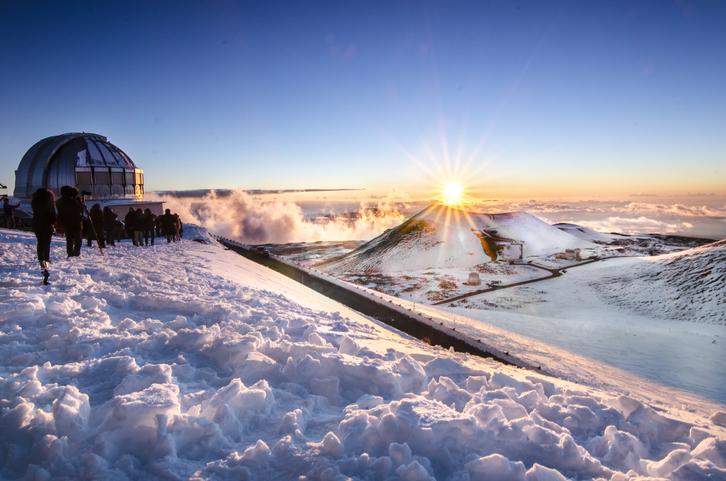 Hawaii has a stunning array of climates to explore, and you can go from snow to hot desert on a day trip. You can sit atop Mauna Kea in the winter atop fresh snow to stargaze during the day. After all, Mauna Kea is home to one of the world’s most advanced observatories where scientists from around the world study the cosmos. Then you can drive down the slopes to taste Kona coffee grown at the perfect elevation before ending your day snorkeling with sea turtles on the hot, dry sands of the west coast.
Hawaii has a stunning array of climates to explore, and you can go from snow to hot desert on a day trip. You can sit atop Mauna Kea in the winter atop fresh snow to stargaze during the day. After all, Mauna Kea is home to one of the world’s most advanced observatories where scientists from around the world study the cosmos. Then you can drive down the slopes to taste Kona coffee grown at the perfect elevation before ending your day snorkeling with sea turtles on the hot, dry sands of the west coast.
And that’s the beauty of The Big Island. Its massive mountains literally cut the island up into climate zones. On the west side of the island, you’ll find the city of Kona sitting in a field of volcanic rocks. It’s hot, dry and the sun reflects heavy off the glassy rocks of fresh lava flows. On the east side of the island, you’ll find the city of Hilo sitting in a lush rainforest. So, every day, you get to choose which kind of climate you experience.
Waterfalls
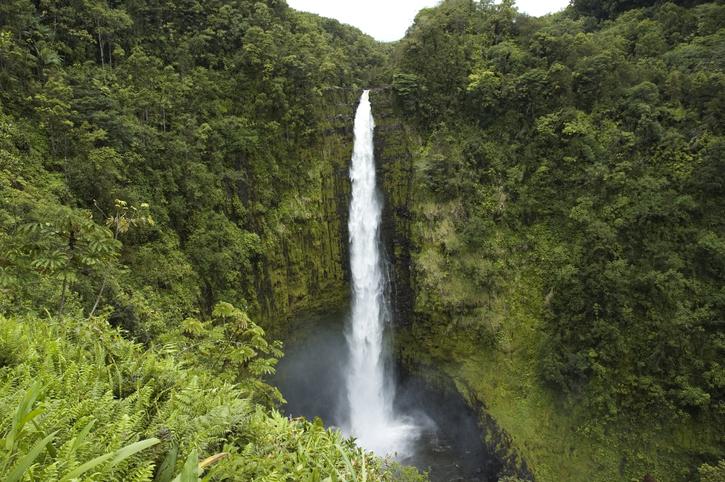 There’s no shortage of waterfalls on the Big Island. You just have to look in the right climate zone to find them. And you’ll find those waterfalls around the city of Hilo on the wet, lush and verdant eastern side. You’ll also find plenty of waterfalls on the mini Na Pali Coast on the dramatic north shore near Hamakua.
There’s no shortage of waterfalls on the Big Island. You just have to look in the right climate zone to find them. And you’ll find those waterfalls around the city of Hilo on the wet, lush and verdant eastern side. You’ll also find plenty of waterfalls on the mini Na Pali Coast on the dramatic north shore near Hamakua.
The waterfalls are pouring at their most powerful after a fresh snowfall. All the snowmelt joins up with rainwater and fresh artesian springs to carve streams into the island. These streams trickle down the island, join up and tumble over beautiful tropical waterfalls near the edges of the island.
You can find the 442-foot Akaka Falls right next to the 100-foot Kahuna Falls in Akaka Falls State Park on the Hilo Coast. A short, well-paved hike takes you through the rainforest to dramatic lookouts where you can see the power of mother nature up close.
And the extraordinary Rainbow Falls can be found underneath a jungle canopy just a short drive inland from Hilo City. These drive-up falls pour over an impressive cliff to make a stunningly powerful pool below. And it’s all a part of the Wailuku River which pours out into the Pacific in the middle of the city.
Kilauea Volcano
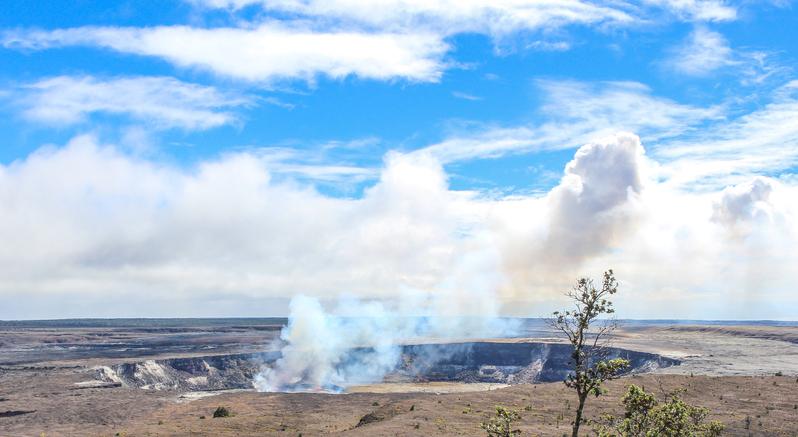 The Big Island has five active volcanoes. The two most noticeable are Mauna Kea and Mauna Loa simply due to their size. The island literally sits on their slopes. Mauna Loa’s last eruption lasted an astounding 22 days back in 1984, and Mauna Kea erupts every six years, or so, making these two mountains unreliable for lava viewing.
The Big Island has five active volcanoes. The two most noticeable are Mauna Kea and Mauna Loa simply due to their size. The island literally sits on their slopes. Mauna Loa’s last eruption lasted an astounding 22 days back in 1984, and Mauna Kea erupts every six years, or so, making these two mountains unreliable for lava viewing.
The Big Island’s two other volcanoes are near-impossible to see. Hualala is just to the northwest of Mauna Loa, but it hasn’t erupted since 1801. And Loihi can be found just south of Kilauea. Unfortunately, the volcano is submerged completely underwater making it impossible to visit.
But Kilauea is Hawaii’s most reliable volcano, and it just so happens to Hawaii’s youngest and strongest volcano. And you can visit the peak of this volcano inside Volcanoes National Park in the southeast of the island.
Volcanoes National Park is home to the Halema’uma’u and Puʻu ʻŌʻō craters. Halema’uma’u Crater used to house a lake of lava which was visible from a visitor’s center observation deck. Park Rangers used to host nighttime viewing of the lava to add to the growing drama. And Puʻu ʻŌʻō Crater once had a reliable river of flowing lava pouring from it.
Unfortunately, an eruption in May of 2018 changed the landscape of the southeast portion of the island. Kilauea’s most recent eruption drained the lava lake out of Halema’uma’u and put an end to the lava flowing out of Puʻu ʻŌʻō crater. The park has since reopened, and park rangers are not worried about the lack of lava in the park.
Similar eruptions have temporarily drained the craters in the past only to have the lava return sometime later. But, for now, the park is devoid of visible molten rock. However, that shouldn’t deter you from visiting Volcanoes during your visit.
There are plenty of beautiful hikes inside the park, and many of the walks have dramatic names like Devastation Trail. These hikes can take you to the edge of volcanic craters and teach you about the history of Kilauea’s lava flows. And the visitor’s center is quite an educational treat, as well. You’ll learn all about Hawaii’s fiery history, and you can even ask a park ranger about Kilauea’s current activity.
Kilauea’s lava may have stopped flowing in the park, but the volcano is still very active on the island. You’ll just have to go looking for it outside of the park’s boundaries.
Hunting For Lava
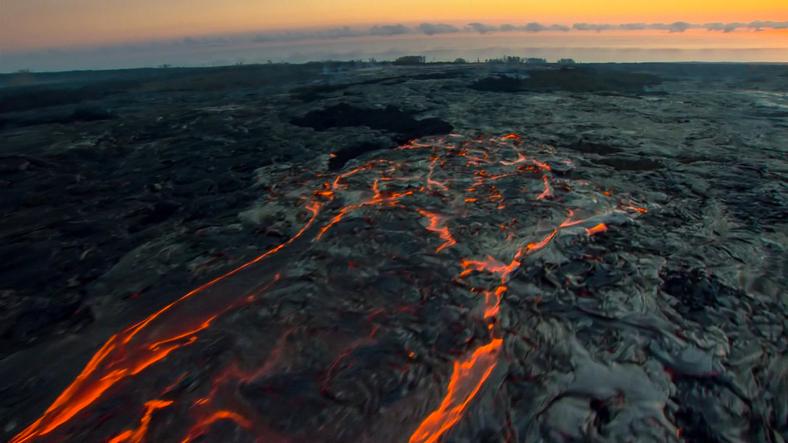 Down in the southeastern part of the island, you’ll find a devastated area called the Lower East Rift Zone. Much of Kilauea’s activity takes place here. If you’re lucky, there will be an active lava flow cutting its way through a field of hardened rock before pouring into the ocean.
Down in the southeastern part of the island, you’ll find a devastated area called the Lower East Rift Zone. Much of Kilauea’s activity takes place here. If you’re lucky, there will be an active lava flow cutting its way through a field of hardened rock before pouring into the ocean.
You can hike yourself to these lava flows should they exist. Just remember that volcanic activity is quite unpredictable, so there may not be flows during your vacation. But, if there is an activity, you may be able to hike your way through a field of volcanic rock to a river of lava.
It’s advisable to hire a tour guide to take you to the hot spot. This may cost you some money, but it will save you a lot of time. And time is the most valuable thing you have during your vacation in Hawaii. A tour guide will keep you safe and hydrated while taking you to the best lava viewing spot of the day.
If there’s lava flowing into the ocean, you can join a boat tour that takes you to the pour point. The cooling lava hisses to send a toxic plume of steam and glass into the sky, and a boat can take you right to the spot where the new island is being born. You’ll be safe on the boat, and you’ll get closer than most to the lava flow which makes for a great social media pic.
The Big Island Has The Tallest Mountain On Earth With Snow!
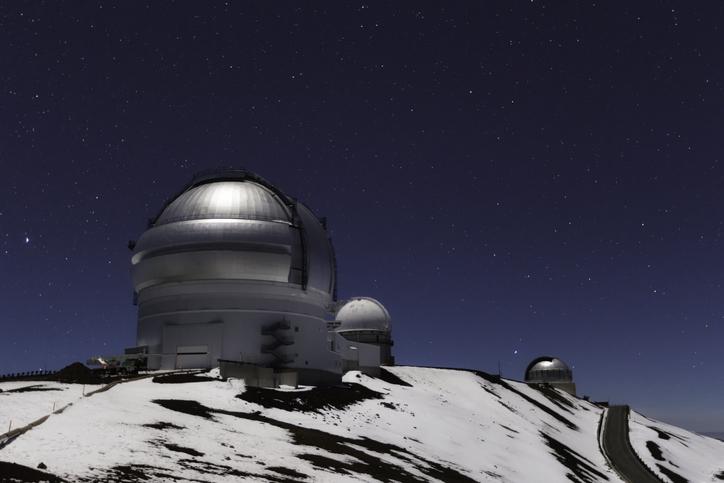 Mauna Kea stands 13,803 feet above sea level which is 125 feet taller than Mauna Loa. But, when measured from the seafloor, Mauna Kea stands an astonishing 33,476 feet. For comparison, Mount Everest is a paltry 29,028 feet. This makes Mauna Kea the tallest mountain on earth if you measure from the ocean bottom. But, even if you don’t measure from the ocean floor, Mauna Kea is still the largest volcano on earth.
Mauna Kea stands 13,803 feet above sea level which is 125 feet taller than Mauna Loa. But, when measured from the seafloor, Mauna Kea stands an astonishing 33,476 feet. For comparison, Mount Everest is a paltry 29,028 feet. This makes Mauna Kea the tallest mountain on earth if you measure from the ocean bottom. But, even if you don’t measure from the ocean floor, Mauna Kea is still the largest volcano on earth.
And during the months of January and February, you’ll find snow atop the largest volcano in the world. Drive yourself to the top, and you’ll find locals sledding and even skiing. Now, skiing isn’t the best. There are no lifts and the terrain is rather rough. Plus, if you ski well enough, you’ll eventually run out of the white stuff as you descend into another climate zone. So maybe it’s best to save skiing for Colorado.
You’ll also find locals loading up truck beds with snow. They’ll drive it back down the slopes of the mountain through a variety of climate zones for the children. After all, a snowball fight is rather refreshing when it’s pushing 90 degrees outside!
Waipio Valley: Black Sand Beaches, Waterfalls, and Boundless Hiking
The north shore of The Big Island is dramatic; nearly as dramatic as Kauai’s Na Pali Coast. And the jewel of the north shore is the Waipio Valley. The Wailoa Stream carves its way through the rugged hillsides of the north shore to carve the valley, and at its confluence, you’ll find black sand beaches framed by dramatic coastal cliffs. Follow the stream inland, and you’ll find an amazing array of waterfalls on endless hiking trails. It’s an outdoor lover’s dream.
Kona Coffee
 Some of the best coffee in the world is grown on the Big Island. The environment is perfect at certain elevations on the slopes of Mauna Kea. As the name would suggest, many of these coffee farms face the Kona side of the island. Interestingly enough, Kona roughly translates to the sailing term leeward. It means the side of the island less likely to see a storm, and it barely rains on the Kona side of the island.
Some of the best coffee in the world is grown on the Big Island. The environment is perfect at certain elevations on the slopes of Mauna Kea. As the name would suggest, many of these coffee farms face the Kona side of the island. Interestingly enough, Kona roughly translates to the sailing term leeward. It means the side of the island less likely to see a storm, and it barely rains on the Kona side of the island.
You can take a tour of one of the world-class coffee farms where you’ll learn about the environment and growing process. You’ll get to taste the young red coffee fruit before it’s put through the process of becoming a coffee bean. It’s actually very sweet and full of antioxidants. In fact, you’ll find red coffee bean juice in many locations around the island.
Finally, the tour will wind down with a cup of the good stuff on the slopes of the mountain. You’ll be able to look out over the dramatic landscape to the west, and you’ll see the stunning blue waters of the Pacific past fields of glassy, young volcanic rock.
Beautiful Beaches of the West Side
 Kona has some of the most beautiful beaches in all of Hawaii. The water is amazingly blue and the sand is pure white. This is the older side of the island, so the coast has had time to wear down over the centuries. The surf has pounded the volcanic rocks away and swept in calcium-rich white sand that does not get hot underfoot.
Kona has some of the most beautiful beaches in all of Hawaii. The water is amazingly blue and the sand is pure white. This is the older side of the island, so the coast has had time to wear down over the centuries. The surf has pounded the volcanic rocks away and swept in calcium-rich white sand that does not get hot underfoot.
And you’re likely to see a sea turtle or monk seal during your time on the west coast. The turtles and seals love to lounge on the soft sand, and the friendly sea creatures eat just off the shore. Just remember that it is illegal to touch monk seals or sea turtles, so keep your distance when snapping that selfie.
Black and Green Sand Beaches
 The southern and eastern sides of the island are younger, and that’s where you’ll find the otherworldy black sand beaches. Well, it’s not actually sand, per se. It’s simply a volcanic rock that has been pounded by the surf for many years. This breaks the rocks down into smaller pieces, but the pieces tend to be gritty and sometimes sharp. Make sure to wear protective footwear when visiting one of these odd-looking beaches.
The southern and eastern sides of the island are younger, and that’s where you’ll find the otherworldy black sand beaches. Well, it’s not actually sand, per se. It’s simply a volcanic rock that has been pounded by the surf for many years. This breaks the rocks down into smaller pieces, but the pieces tend to be gritty and sometimes sharp. Make sure to wear protective footwear when visiting one of these odd-looking beaches.
And the Big Island is home to something incredibly rare -- The Green Sand Beach. You can find this marvel at the southernmost point of the United States. You’ll have to hike a few miles on flat land, but you’ll eventually end up at a blown-out cinder cone. That cinder cone sits right on the coast, and it has been eaten away by the pounding surf.
The cinder cone is full of olivine crystals. These shattered pieces of olivine mix with the beach’s white sand to create a green hue. You’ll have to hike down into the cinder cone on a steep trail, but it’s well worth it. If the surf is calm, the beach makes for great body surfing as the water gets deep rather quickly. And you just might find yourself body surfing alongside sea turtles in this rare green coastal cove. But only swim if you’re incredibly confident in your ability. There’s no protective reef or lifeguard, the waves can be rather powerful and you’re miles away from help.
Merrie Monarch Festival and Ironman Championships
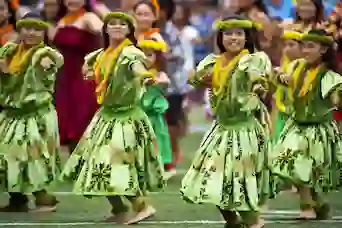 The Big Island hosts two world-class annual events -- The Merrie Monarch Festival and the Ironman World Championships. And each of these events takes place on opposite sides of the island.
The Big Island hosts two world-class annual events -- The Merrie Monarch Festival and the Ironman World Championships. And each of these events takes place on opposite sides of the island.
The Merrie Monarch Festival takes place in Hilo every April. The best hula dancers in the world converge to put on a show in order to win the championship. There are different competitions all through the week, and the entire event is a celebrated citywide.
In Kona, the Ironman Championships take place every October. International competitors from all age and gender groups converge on the hot, dry side of the island to compete in this invite-only event. Contestants swim 2.5 miles, bike 120 miles, and cap off the day by running a marathon (26.22 miles). Yes, they do this in a single day. The grueling contest is celebrated city-wide all week long, and the highways of the west coast are shut down on race day.
The Hilton Waikoloa
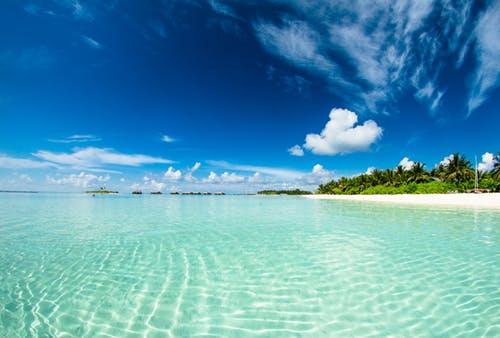 Waikoloa has plenty of five-star resorts to choose from, but none of them stand out like the Hilton. You can ride a tram through the property past man-made waterfalls while sipping world-class Kona coffee. The resort even keeps dolphins in a lagoon where you can watch the friendly critters play during a colorful sunset. If you’re going to splurge for one resort experience, make sure you splurge on The Hilton Waikoloa.
Waikoloa has plenty of five-star resorts to choose from, but none of them stand out like the Hilton. You can ride a tram through the property past man-made waterfalls while sipping world-class Kona coffee. The resort even keeps dolphins in a lagoon where you can watch the friendly critters play during a colorful sunset. If you’re going to splurge for one resort experience, make sure you splurge on The Hilton Waikoloa.
In the end, this is just an article, and by itself, it couldn't be an ultimate travel guide. However, by planning your trip with Hawaiian Planner, you have access to dozens of travel tools and information to really make the Ultimate Guide.